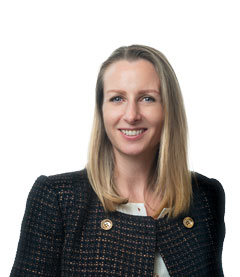
While the big players have the resources to weather these conditions, other operators can find themselves struggling under relentless financial and emotional strain.
With investors looking for new opportunities and operators looking for an exit, could this be the right time to sell?
More than half of aged care facilities losing money
There are some outstanding mid-market aged residential care (ARC) facilities in New Zealand, which have between 50 and 150 beds and are often located in the regions. Typically, these are family owned or run by small trusts. They usually provide excellent personal service, and as a result they enjoy high occupancy rates and are a vital part of their community. But despite being in demand, they face considerable pressures.
One of the biggest challenges is the difficulty in recruiting staff, particularly nurses. This is most acute for rural facilities in low-population areas. To attract and retain registered nurses and other professionals, the ARC sector is facing above-inflation increases in staff costs.
On top of staffing difficulties, maintaining and upgrading a facility is costly. It requires continuous investment and many mid-sized ARC operators have deferred maintenance costs that keep piling up. The sector is also facing uncertainty pending a review of funding allocations, as well as rising utilities and rates expenses. Loss-making operations are a problem for owners, residents and staff alike. Nobody wants to see cost-cutting measures that result in lower-quality care for our elderly.
And all this sits against the backdrop of a rapidly aging New Zealand population. By 2032, Health NZ estimates the country will have 12,000 fewer ARC beds than it needs. The typical age of entry into ARC beds is 85 or older, once people can no longer live independently. The level of care varies depending on the individual, but includes assistance with daily living tasks from trained caregivers and registered nurses. Stats NZ forecasts that in 2051, New Zealand will be home to between 275,000 and 322,000 people aged 85 or older, a substantial increase on our current elderly population of around 95,000.
Scale is a strategy to consider as the sector consolidates
We need more beds, but mid-sized operators don’t have the scale, the funding and the human resources to upgrade, expand and comply as the sector evolves. A possible solution lies in scale: consolidating the ARC sector, allowing smaller operators to step back and larger investors to acquire new assets.
Scale provides efficiencies that make all the difference. That applies to staffing, procurement and compliance, and it gives larger operators negotiating power to secure better deals on utilities, maintenance and construction work. Owning more facilities provides geographic reach and allows for diversified services, such as specialty dementia care. In 2020, around 70,000 Kiwis lived with dementia, with this number projected to increase by 240% over the next 30 years, according to Alzheimers New Zealand.
ARC real estate can provide stable, income-generating assets for many decades, making it a solid performer for investors. It’s attractive for private equity investors, too, who can buy several facilities and then fund upgrades and expansions, creating a valuable asset portfolio. Even institutional investors like the ARC sector, not only for the tangible real estate assets, but because demographic projections make it clear that demand for beds will only keep increasing.
A sigh of relief for operators looking to step back
We’ve worked with many mid-sized operators navigating the pressures of the ARC sector and have seen that despite having the goodwill of the community behind them, it’s still an extremely challenging environment to operate in. Our team has supported a significant number of care operators in achieving their exit strategies, both in Aotearoa and in overseas markets, where the care environments face comparable issues.
These business disposals have allowed individuals and families to step back and finally realise a profit from decades of hard work. Aged care can be emotionally draining, and many people pour their heart and soul into caring for their clients and supporting their staff. When the operators have a solid succession plan in place, there’s an enormous sense of relief. They’ve told us how happy they are to pursue a new passion project, retire altogether, or take more time with their families before deciding on a new direction.
It's hugely satisfying to see a stressed ARC provider shift into a new phase of their life, knowing their clients will be cared for and their business will continue to serve the community. This can be a genuine win-win for the buyer and the seller, while also retaining – and often expanding – an essential facility for local residents.
Merger and acquisition activity can grow a sustainable ARC sector
ARC operators who are feeling the pressure from all angles should be thinking hard about whether this is an opportune time to connect with an investor. Strategic mergers and acquisitions can provide the chance for this part of the retirement sector to restructure, consolidate and emerge more resilient.
That sets up a pathway for a stronger sector that can grow more quickly, which is imperative for our aging population. A sustainable and profitable ARC sector is the only way we can deliver more beds and high-quality care for our senior citizens.
Get articles and updates relevant to your business and industry delivered directly to your inbox.

